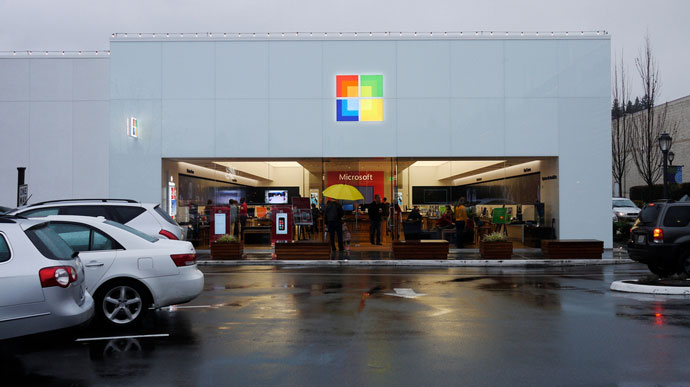Do Microsoft Layoffs Signal The End Of The Modern Workforce?

Image via Flickr/ Zero Cho
Microsoft Corporation is letting 14 percent of its global workforce go according to an announcement the company made on Thursday morning. The company’s decision to rid itself of so many staff is not pressured by a dire financial situation, it’s a decision by Microsoft to become more flexible. Revenue per worker is increasing as software does the jobs that people used to do. Microsoft is trying to catch up with companies like Google, that already manage billion dollar empires on relatively few employees.
The move toward fewer employees and more software based productivity is one of the major trends that labor force analysts expects to define the next two decades. In the sphere of manual labor, robots should be able to replace many of the world’s more repetitious jobs over the next twenty years. Companies like Microsoft may be leading the way, but the modern workforce in full may be soon to follow.
Separating Wheat From Chaff
In this morning’s lay-off announcement, Microsoft said that most of the layoffs would happen in the company’s Nokia device making segment (with 12,500 of the Finnish company’s workers facing an end to their employment) but the remainder is to come from its own organization. The company is looking to increase efficiency, and in recent years that’s become easier.
Any task which is regular and repeating could be a victim of the change to a more capital intensive economy. This isn’t a new trend. Since the agricultural revolution of 200 years ago, better technology and capital investment have reduced the need for labor in thousands of roles. The leak of the process into the office is a change that many didn’t see coming, but it’s likely to define the future of workplace relations.
Automation Pushes Employees To The Edge
The Microsoft layoffs are not the first to show off the power of increasing automation. Moves in the financial industry since the financial crisis have shown an eagerness to replace staff with computer solutions. The stock market is almost completely computer-maintained, and as consumers become more used to tablet computers and smartphones, the commercial banking world is increasingly replacing its clerks with automated solutions.
Some analysts have suggested that the difficulty in returning to full employment in the wake of the 2008 financial crisis may not be entirely due to macroeconomic factors. The labor market shock may be responsible for at least a part of the unemployment that has caused difficulty for millions in the United States and around the world.
Reporting systems and data entry are jobs that could disappear very quickly on the back of better software development. Companies like IBM and Microsoft itself are attempting to find user-friendly solutions to enterprise problems. Workers looking to protect themselves from the coming changes shouldn’t necessarily look for a creative industry. Positions that are not regular are still the best bet for the world’s youth.









































